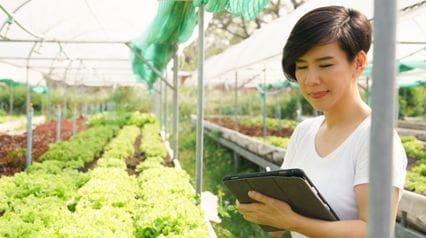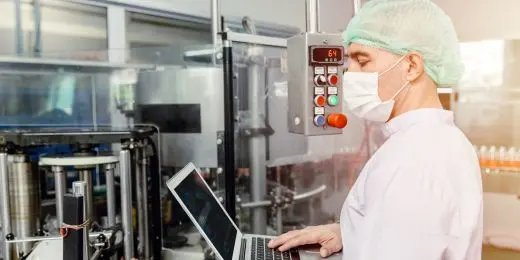What is Food Traceability?
Food traceability is the process of tracking the various steps food has gone through in the supply chain, from getting harvested as a raw material to getting picked out by a consumer in retail stores. This system is crucial in ensuring food quality, public health, and safety, which is why governments around the world are adopting tougher measures to guarantee it.
Importance
As the global food trade continues to grow more diverse and complex, traceability in the food supply chain has become a priority of the Food and Agriculture Organization (FAO) and the World Health Organization (WHO) in recent years. Here’s why:
- Ensures consumer health and safety – Consumers are protected from health hazards caused by contamination through prompt announcements of product withdrawals and recalls.
- Mitigates problems and minimizes trade disruptions – Entrepreneurs, from growers to distributors, benefit from this system because they can locate and remove defective products from the market quickly and cost-effectively.
- Combats food fraud – Food counterfeiting, adulteration, substitution, and other forms of food fraud can be stopped when an effective traceability process is in place.
- Reduces food waste and promotes food security -A good traceability system for food manufacturing can eradicate the trillion-dollar problem of food waste. Ultimately, solving global food insecurity is a real possibility.
How Does it Work?
The food traceability system ensures that any food product is safe at every step of the production process. If a problem is discovered in any phase of the supply chain, appropriate actions can be taken promptly, and future occurrences of any problems can be prevented. Here’s a basic blueprint of what the system may look like:
Comprehensive Preparation
The various businesses involved in the supply chain, from the grower of a specific ingredient to the grocer in the retail shop, have all the salient information about themselves and the end product. Below are some must-haves in the system:
- Ingredients from various suppliers
- Batch or lot numbers
- Traceability information (business name, address, transaction dates, and quantities)
- Complete record of all information (made available when requested)
If anything comes up that would require a product withdrawal or recall, everyone on the team is ready to deal with it.
Immediate Response
If a raw material is identified as contaminated, production may pause, or a new grower or producer may be sourced. If the end product is found to be problematic, the process of locating and recalling it will be much swifter.
Safe Recovery
The general public is immediately informed of withdrawals and recalls. Subsequent solutions like replacement or refund are also communicated. Aside from promoting consumer trust and confidence, the brand gets to restore its reputation.
Preventive Measures
Since issues are quickly identified and solved through the traceability system, measures can be put in place to prevent these from happening again.
SafetyCulture for Food Traceability
Eliminate manual tasks and streamline your operations.
Get started for FREEWho Guarantees Food Traceability?
Regulatory bodies all over the world, in cooperation with the FAO and the WHO of the United Nations, are doubling down in setting stricter protocols because global food trade has become easier.
In the United States, several agencies work together to ensure food safety and quality for American consumers. FDA food traceability systems involve the Department of Agriculture, the Department of Homeland Security, and the Environmental Protection Agency, just to name a few. But this massive endeavor will not succeed without the other stakeholders.
All participants in the supply chain—farmers, factory workers, transporters, importers, and retail workers—should ensure that proper traceability. They are responsible for establishing a system apt for their industry and incorporating technology that makes the process more efficient, such as comprehensive labeling, barcodes, and RFIDs.
Consumers, the ones on the receiving end of the supply chain, are also stakeholders. Given the right information and safety assurances, they can make better decisions for themselves and help report problems that may arise.
Challenges
Food traceability benefits everyone. But this will only work if everyone is truly involved every step of the way. Unfortunately, that is not the case in all industries due to some issues:
No Traceability
Some companies, particularly those in developing countries and those considered small businesses, provide little to no information about their products. Without transparency, it will be hard to pinpoint the root cause of a problem.
Lack of Communication Among Participants
Because the food supply chain involves numerous participants, open communication is a must to prevent errors, minimize waste, and lessen inefficiency in the system.
Inventory Failure
Proper inventory management is a very important step in maintaining food quality, controlling costs, and reducing waste. Regular and more efficient checks are a must.
Aside from transparency, using up-to-date technology is one way to guarantee proper traceability. Creating networks where all participants can communicate, organize tasks like inventory checks, and even manage costs is a great way to make the system work.
FAQs About Food Traceability
Coffee production, cosmetics manufacturing, and pharmaceuticals should also have traceability systems in place. Establishing such measures for these sectors is crucial to ensure quality control and product safety for consumers.
According to the FDA, market withdrawals happen when the company pulls out a product from the market to correct a minor violation. Recalls happen when a product is pulled out from the market by a company of its own volition or when requested by the FDA.
Today, restaurants are considered “covered entities” by the FDA food traceability protocols and should comply with the regulations. The FDA provides the guidelines for this type of establishment in this document, including certain exceptions and modifications to the recordkeeping rule.
In November 2022, the office published a new set of requirements to enhance traceability processes. Check out the FSMA Final Rule on Requirements for Additional Traceability Records for Certain Foods




